Questo testo dovrebbe avere l’obiettivo di introdurre ed accompagnare, la prima mostra personale di Raffaele Santillo intitolata “FRAGILE, NEVERTHELESS” presso la galleria SMDOT/Contemporary Art, nella città di Udine, ma, la cosa, forse, è leggermente più complessa.
Come spesso accade, a chi scrive e non solo, si è influenzati nell’elaborazione della narrazione, dalla propria memoria, dai ricordi, dallo stato d’animo, inoltre, per quanto mi riguarda, ho avuto la fortuna, nei mesi scorsi, di poter dialogare per molto tempo e in differenti occasioni con Raffaele. Ho ascoltato le sue parole, ho percepito i suoi gesti. Ho abitato il suo studio, dove nascono le opere, alcune le ho seguite nella loro evoluzione. Ho potuto sceglierle. Adesso, mentre scrivo, le immagino singolarmente e nel loro insieme, installate nello spazio adibito alla mostra. Ho la possibilità di guardare le loro foto, avendole viste da vicino, avendo avuto anche la possibilità di afferrarle, spostarle. Mentre scrivo conosco perfettamente, perché li ho definiti, li ho cercati, in accordo con Raffaele, i limiti del piano concettuale sul quale appoggiare, in questa occasione, i lavori selezionati. Limiti definiti, ma mobili, frastagliati. Il fragile e l’antifragile. Le parole si muovono nello spazio bianco del foglio digitale portando con esse la memoria di questo percorso che ho provato a sintetizzare. Inoltre, bisogna aggiungere, che su questo piano, concettuale e fisico, si muoveranno altre forze, altre traiettorie: le dieci opere pittoriche scelte, gli sguardi e i corpi dei visitatori, i loro e i vostri, pensieri, durante e dopo aver letto il testo e guardato i quadri alle pareti. Solo allora ci potrà essere un’individuazione della narrazione. Molto difficile pensare ad un’opera o ad una mostra prima che sia compiuto il suo processo, o almeno una parte di questo. C’è sempre una semplificazione e un atto di presunzione nel momento in cui un soggetto, precede un processo, con lo scopo di anticiparne il percorso, tuttavia (nevertheless), vale la pena tentare una suggestione e pensare a questo testo non come una introduzione, ma come una prefazione, come un punto di partenza.
Fragile è il punto di partenza scelto, ispirato, dai lavori di Raffaele.
La parola fragile, che viene scritta nello stesso modo, in francese, italiano e in inglese, acquistando un suono diverso nella pronuncia, indica, nel suo significato principale, debolezza, poca resistenza, avvertimento ad usare cautela. Quest’ultimo significato è quello che con grande delicatezza ci suggeriscono le opere di Raffaele Santillo. Un fragile che ci obbliga, all’attenzione, a prenderci cura di quello che guardiamo, prendendoci cura di noi stessi, a guardare recuperando un’attenzione “verticale” in grado di articolare, sviluppare le informazioni nel flusso del tempo, che oggi è stata dimenticata a favore di un’attenzione “orizzontale” più attenta all’infinito presente. Una superficie che rischia di diventare superficiale senza la profondità. La delicatezza delle figure, dei colori, degli spazi segnati da Raffaele non esprimono debolezza, ma una richiesta di attenzione, una garbata richiesta di mettersi accanto, di lato, non di fronte all’altro. Uno stare accanto che sposta il punto di vista, diventa un guardare insieme, senza sovrapporre gli spazi. Un guardare “dentro”. Una memoria individuale (quella dell’artista) che trasfigurata diventa punto di partenza per un nuovo pensiero, un pensiero aperto che non parte e ritorna in un solo punto, ma si espande, si muove intorno. I singoli lavori in mostra diventano dispositivi capaci di rappresentare e farci immaginare la complessità partendo da qualcosa di apparentemente delicato, debole, esposto a rischi, “fuori fuoco”, non solo annunciando resilienza e resistenza, ma dandoci un’altra possibilità. I lavori in mostra non annunciano solamente, ma cercano di suscitare una sensazione, un pensiero, un gesto, un’azione. La resilienza e la resistenza, dice Nassim Nicholas Taleb, nel suo libro “Antifragile. Prosperare nel disordine”, sono comunque sistemi, “luoghi”, fragili con qualcosa in più, finalizzato ad un aumento della robustezza che può solo spostare nel tempo il punto di rottura. Un sistema antifragile, invece, subisce l’evento traumatico, lo fa proprio, e lo sfrutta per migliorare. Si adatta, apporta dei cambiamenti e si evolve, in quanto sistema e non come singolo. Le opere di Raffaele occupano lo spazio intermedio tra fragile e antifrangile, lo spazio della sensazione e dell’elaborazione di un nuovo pensiero, di un nuovo agire.
“Giardino inglese 1 e 2” sono due tele dipinte ad olio di piccole dimensioni, dove natura e figure si scambiano, le figure sono in primo piano, ma non lasciano dietro il giardino, la natura, lo condividono e le figure “senza sguardo” ci invitano a condividere questo luogo, un luogo intenso, tra memoria e futuro, la pennellata è decisa e profonda come in “Sentiero” e “Grande Fontana”, due lavori di medie dimensioni, il primo su tela, il secondo su carta. La fermata dopo una passeggiata “attraverso” la montagna di un uomo e una donna, rivolti verso lo spettatore, per riposare o scambiare qualche informazione si trasforma in un incanto di un adulto e un bambino, di spalle, davanti ad una grande fontana, simbolo di qualcosa che sempre rinasce, sono entrambi figurazioni di memorie individuali, fermo immagini di sensazioni differenti, ma nello stesso tempo unite all’interno di un tempo intimo e collettivo.
“Solido con germogli e “Linea di costruzione”, rispettivamente un piccolo acrilico su carta e una tela di medio/grandi dimensioni realizzata con una tecnica mista, a prima vista, sono le uniche opere senza figure, ma la loro assenza è delicatamente presente. I piccoli germogli, fragili e tenaci, nel loro stare non sempre in luoghi sicuri e la rappresentazione di un piccolo spazio vuoto intimo sono soglie minime di una nuova umanità coabitata.
“Teatro romano”, il frammento di un video di famiglia diventa una grande tela realizzata con una tecnica mista, colori caldi, chiari, luminosi. Un bambino corre verso la complessità del suo futuro accompagnato dalla speranza e dalla fiducia. “La panchina verde” e “Solito giro” due piccoli lavori a olio, il primo su tela, il secondo su tavola, invitano alla sosta, alla riflessione, a un tempo lento, all’attenzione ai piccoli gesti, alle abitudini. Una donna siede sulla panchina e guarda il suo cane, una coppia si ferma, quasi in posa per un ritratto dopo la consueta passeggiata in bicicletta. Un’intensa e delicata rappresentazione, dell’azione che si ripete, del tempo utilizzato per essere e non solo per funzionare. “Fragile”, una grande tela realizzata con una tecnica mista, è l’opera che ha ispirato oppure si è fatta ispirare dalla mostra. Pochi colori, poca pittura, due figure rappresentate in una posizione strana, atipica.
Portano in testa una sedia. Una sedia seduta. Un capovolgimento del punto di vista. Un invito, sempre garbato, delicato, a non accomodarsi, non occupare un posto da osservatore esterno, ma quello di stare in piedi, insieme, immersi, coesistenti. Consapevoli della fragilità, che ci tiene vigili, tuttavia ci permette di esistere e di evolverci.
Stefano Monti
This text was intended to present and accompany Raffaele Santillo’s first solo exhibition entitled “FRAGILE, NEVERTHELESS” at the SMDOT/Contemporary Art gallery in the city of Udine, but perhaps things are a little more complex than that. We are all often influenced by our own memories and state of mind as we develop a narrative. In my own case, I was lucky enough to have the chance to talk at length with Raffaele on several different occasions in recent months. I listened to his words, I saw his gestures. I spent time in his studio, where his works come to life and followed some of them as they evolved. I was allowed to select them. Now, as I write, I can imagine them individually and as a group, installed in the space used for the exhibition. I have the opportunity to look at the photos, having already seen the real works up close, held them in my hands and moved them around. As I write, I am very aware of the limits of the conceptual base we have chosen to set these selected works upon in this instance, because I helped to define them, elaborating them in collaboration with Raffaele.
These limits are defined, but they are also mobile and jagged. Fragile and antifragile. The words move across the white space of the digital page, carrying with them the memory of the journey I have tried to sum up. Of course, on a conceptual and physical level, other forces, other trajectories, also move: the nine chosen pictorial artworks, the gazes and bodies of the visitors, their thoughts and yours, during and after reading the text and looking at the paintings on the walls. Only then can the narrative be identified. It is very difficult to think of a work or an exhibition before the process involved has been completed, at least in part. There is always some simplification and an act of presumption in the moment a subject precedes the process, in the hope of foreseeing its direction. However (nevertheless), it is worth trying an idea and thinking of this text not as an introduction, but as a preface, as a starting point.
Fragile is the starting point that was chosen, inspired by Raffaele’s works. The word fragile, which is spelled the same way in French, Italian and English (although with a different pronunciation), primarily indicates weakness, a lack of strength and a warning to use caution. It is this last meaning that the works of Raffaele Santillo evoke with great subtlety. A fragility that forces us to pay attention, to take care of what we look at, to take care of ourselves. It is an attempt to recovering a “vertical” attention that can articulate and develop information within the flow of time, which today has been neglected in favour of a “horizontal” attention more interested in the infinite present. This is a surface that risks becoming superficial, something without depth. The delicacy of the figures, colours and spaces marked out by Raffaele do not express weakness, but rather a call for attention, a gentle request to ‘stand next to’: to stand side by side, not in front of the other. This is a ‘standing next to’ that shifts our point of view and becomes ‘looking together’, without the overlapping of spaces. It is looking “inside”. An individual memory (that of the artist) which, when transfigured, becomes a starting point for a new thought, an open way of thinking that does not start and return to a single point, but expands and moves around. The individual works on display become devices that can represent and make us imagine complexity starting from something that seems delicate, weak and exposed to risks. Something that is “out of focus”, not only announcing resilience and resistance, but also giving us another chance. The works on display do not just announce, but try to provoke an emotion, a thought, a gesture, an action. As Nassim Nicholas Taleb describes in his book “Antifragile, Things that Gain from Disorder”, Resilience and resistance are nonetheless systems, “places”. They are fragile, but have something more: an attempt to increase robustness that can only shift the breaking point over time. An antifragile system, on the other hand, suffers the traumatic event but makes it its own and uses it to improve. It adapts, changes and evolves, as a system and not as an individual. Raffaele’s works occupy an intermediate space between fragile and antifragile, a dimension of sensation and the elaboration of new thought and new action. “Giardino inglese 1 e 2” are two small oil paintings on canvas, where nature and figures swap places. The figures are in the foreground, but they do not leave the garden and the natural world in the background: they are both together and “without the gaze” invite us to share this intense place suspended between memory and future, among decisive and profound brushstrokes. “Solido con germogli” and “Linea di costruzione”, are respectively a small acrylic on paper and a medium/large canvas with mixed media. At first glance they seem to be the only works without figures, but even their absence is subtly present. The small, fragile and tenacious shoots are not always to be found in safe places, and the representation of a contained, intimate, empty space is the minimum requirement for a new cohabiting humanity. In “Teatro romano”, a fragment of a family video becomes a large canvas made with mixed media in warm, light and bright colours. A child runs towards the complexity of the future accompanied by hope and trust. “La panchina verde” and “Solito giro ” are two small oil paintings, the first on canvas, the second on wood. They invite the viewer to pause and reflect, to a slow tempo, to pay attention to small gestures and habits. A woman sits on the bench and looks at her dog, a couple stops, almost as if posing for a portrait after their usual bike ride. An intense and delicate representation, of repeated actions, of time used for ‘being’ and not ‘functioning’. “Sentiero” is a medium-size oil on canvas with intense, highly-charged colours. A man and a woman facing the viewer come to a stop after a walk “through” the mountain, to rest or share information. This is the embodiment of an individual memory, a still image of different sensations that are at the same time united with the interior of an intimate and collective time. “Fragile“, a large canvas made with mixed media, is the work that inspired or was inspired by the exhibition, from the beginning of its development. There are few colours and little paint. Two figures are represented in a strange and unusual position. They carry a chair on their heads. A chair that is sitting. A reversal of the point of view. This in an invitation, always gentle and polite, not to sit down, not to take a position as an external observer, but to stand together, immersed and coexisting. Aware of the fragility which keeps us alert but nevertheless allows us to exist and evolve.
Stefano Monti
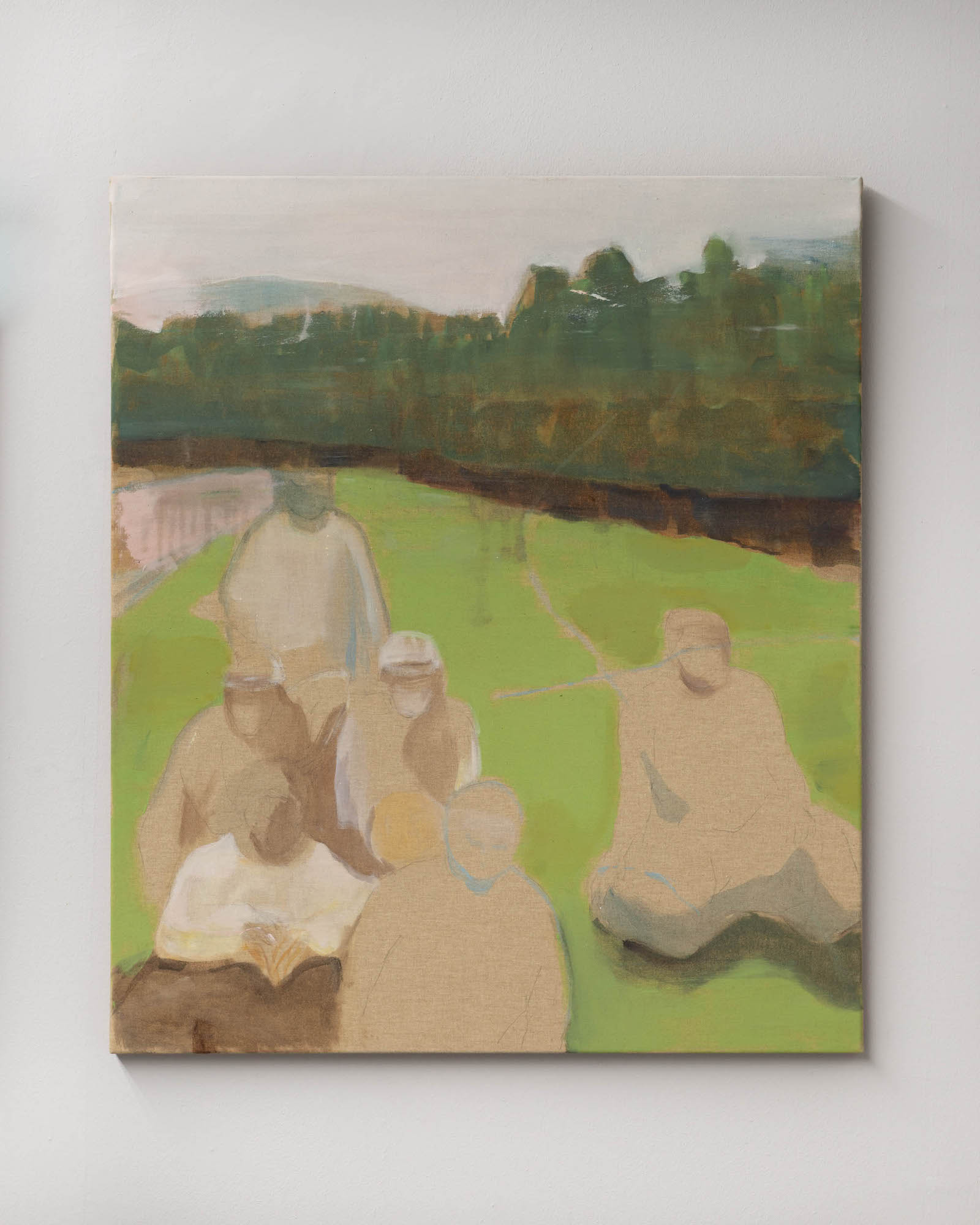
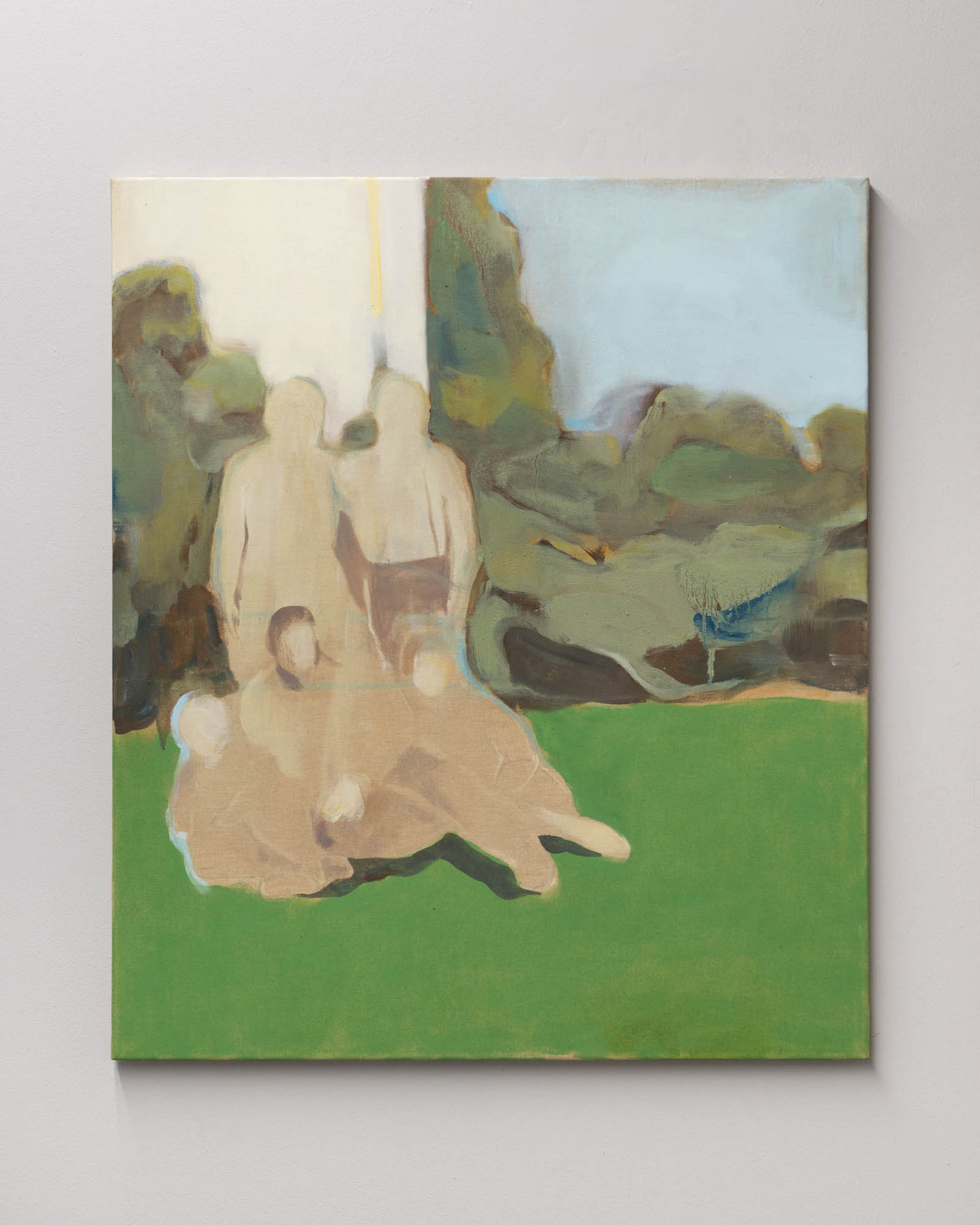
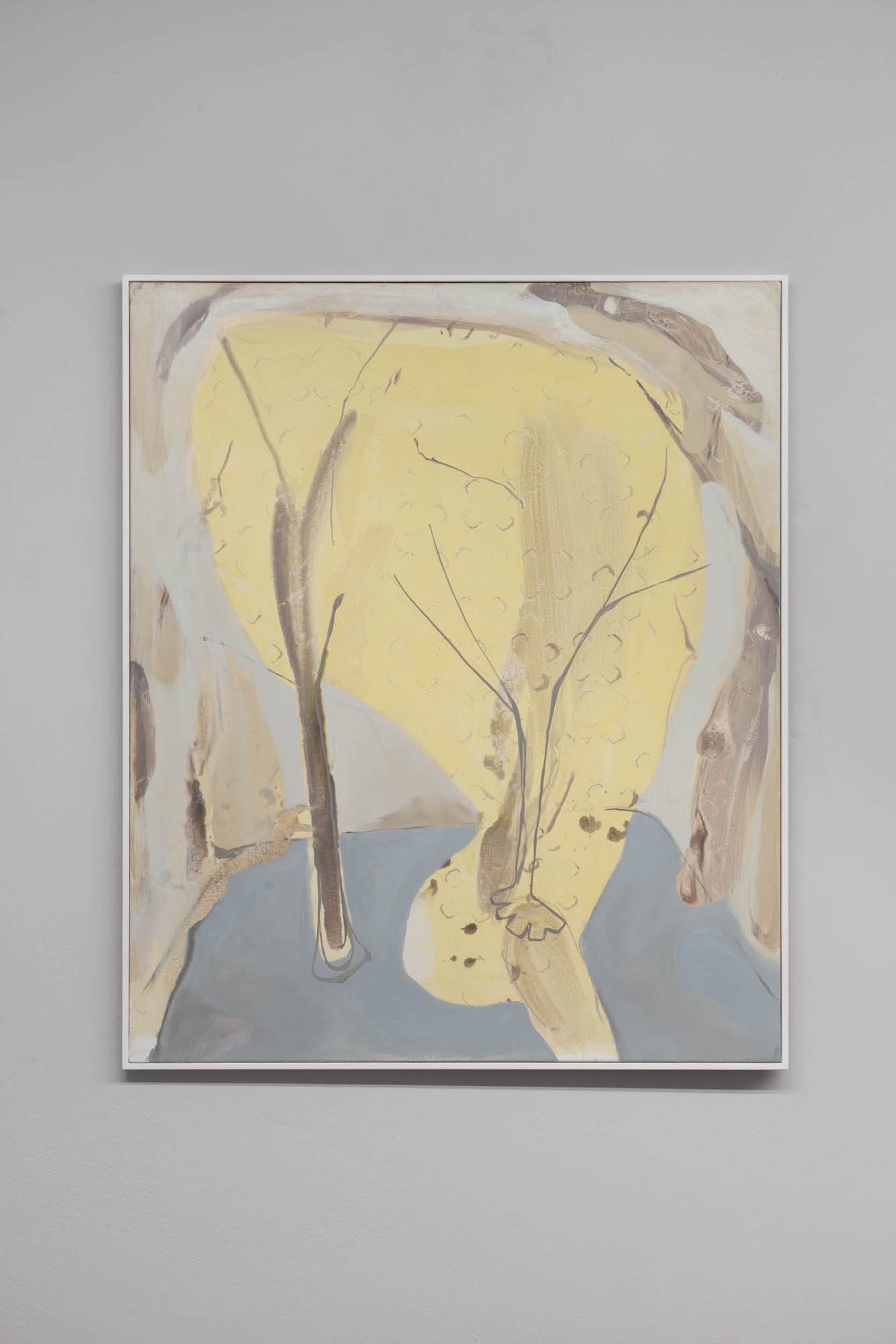
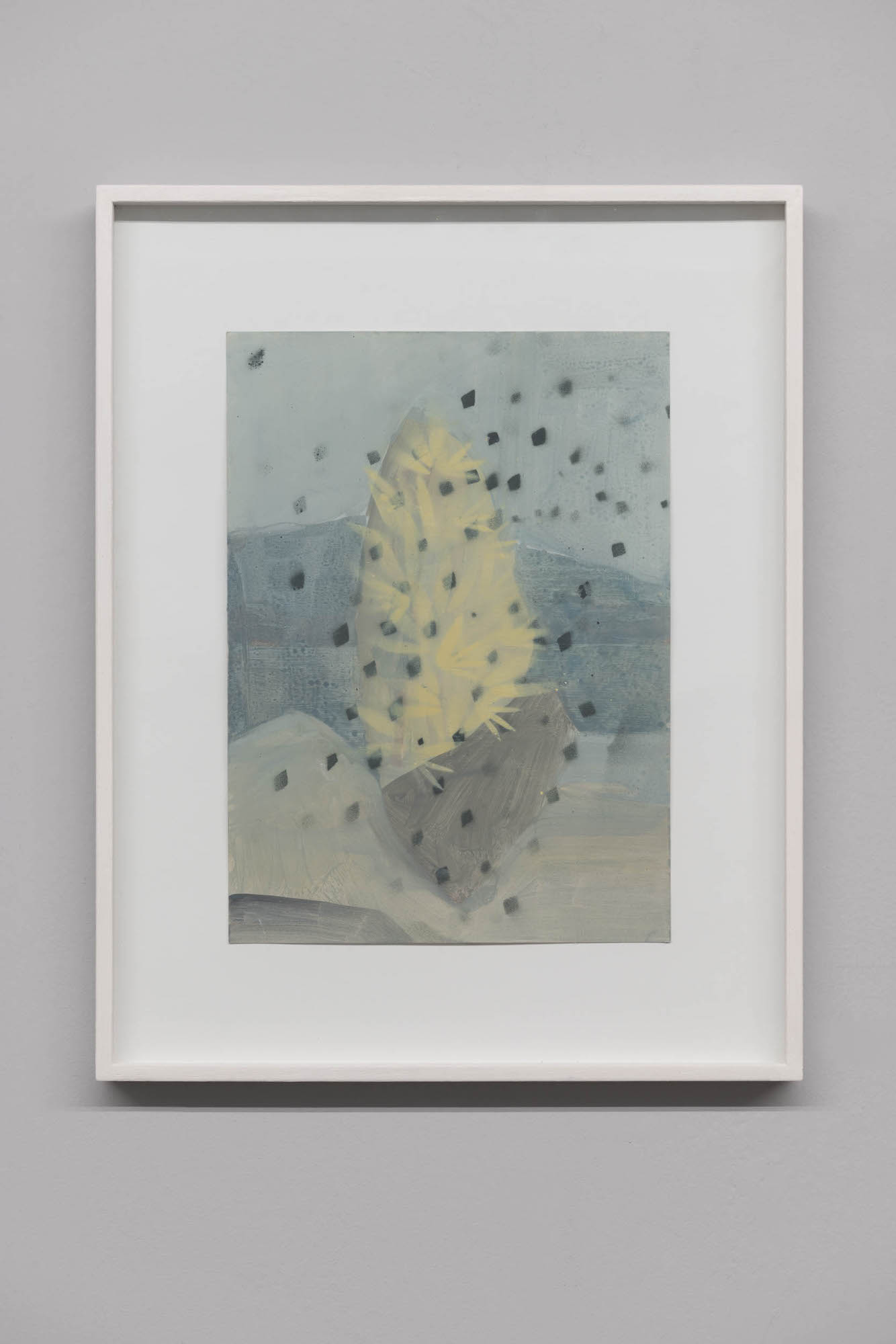
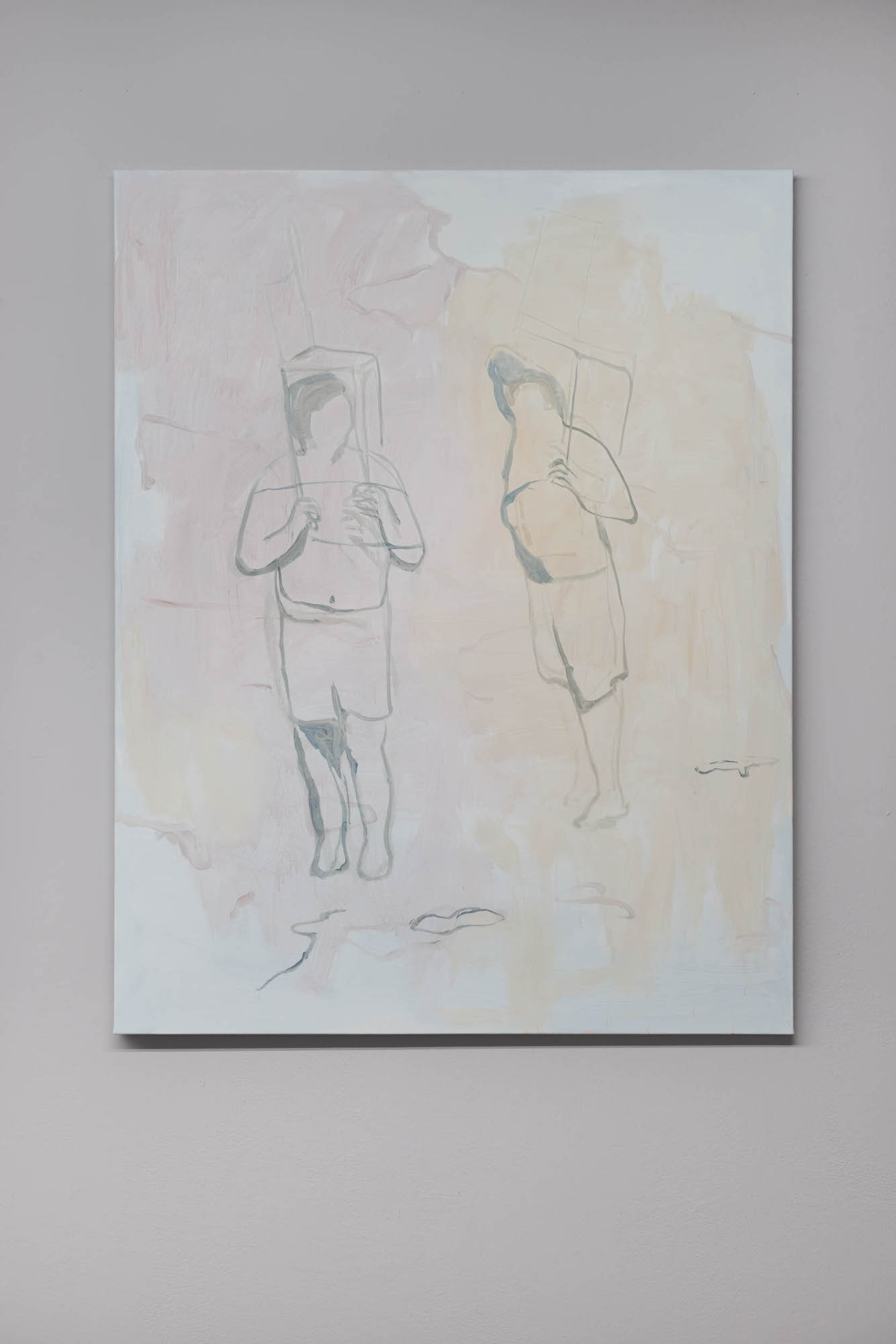
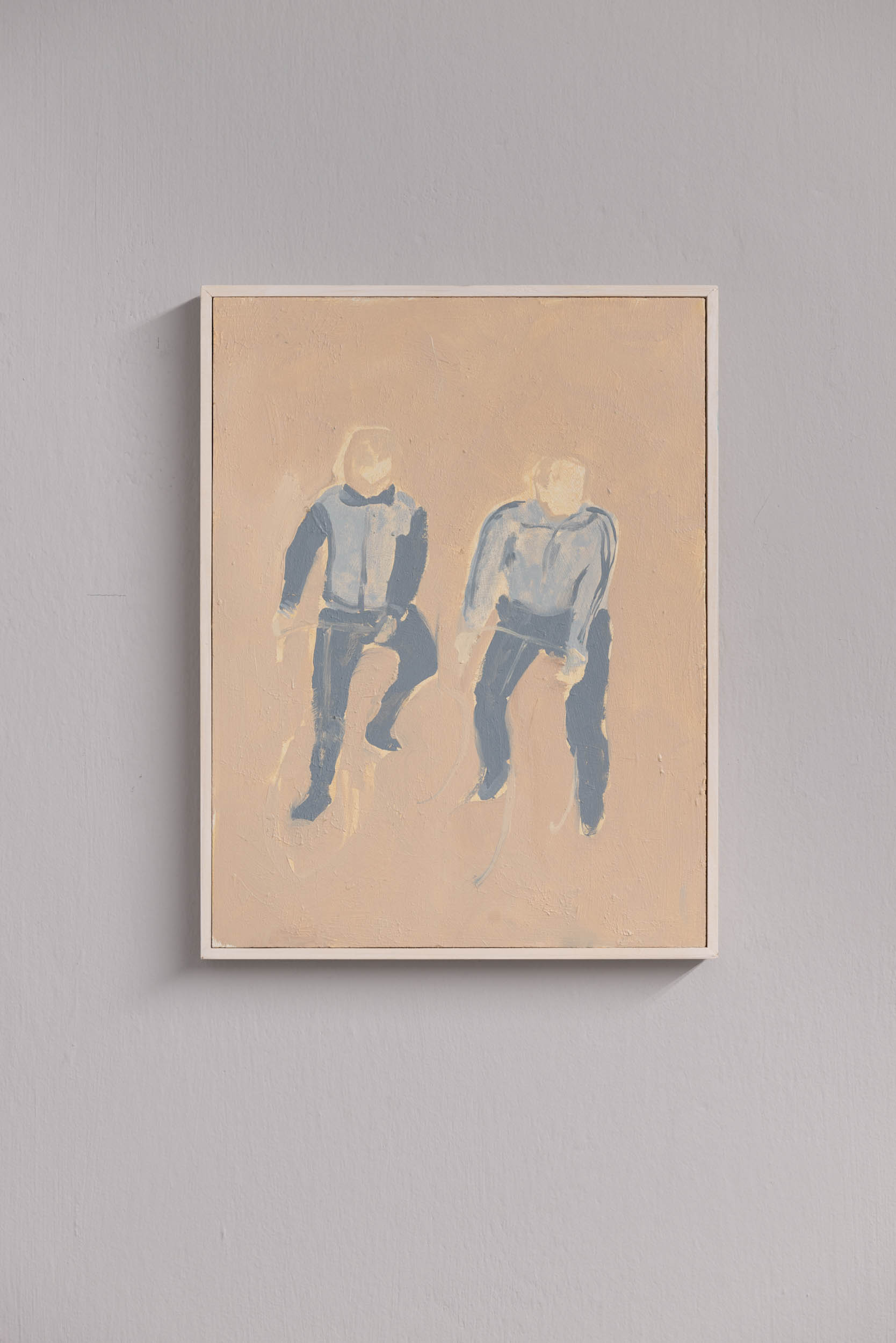
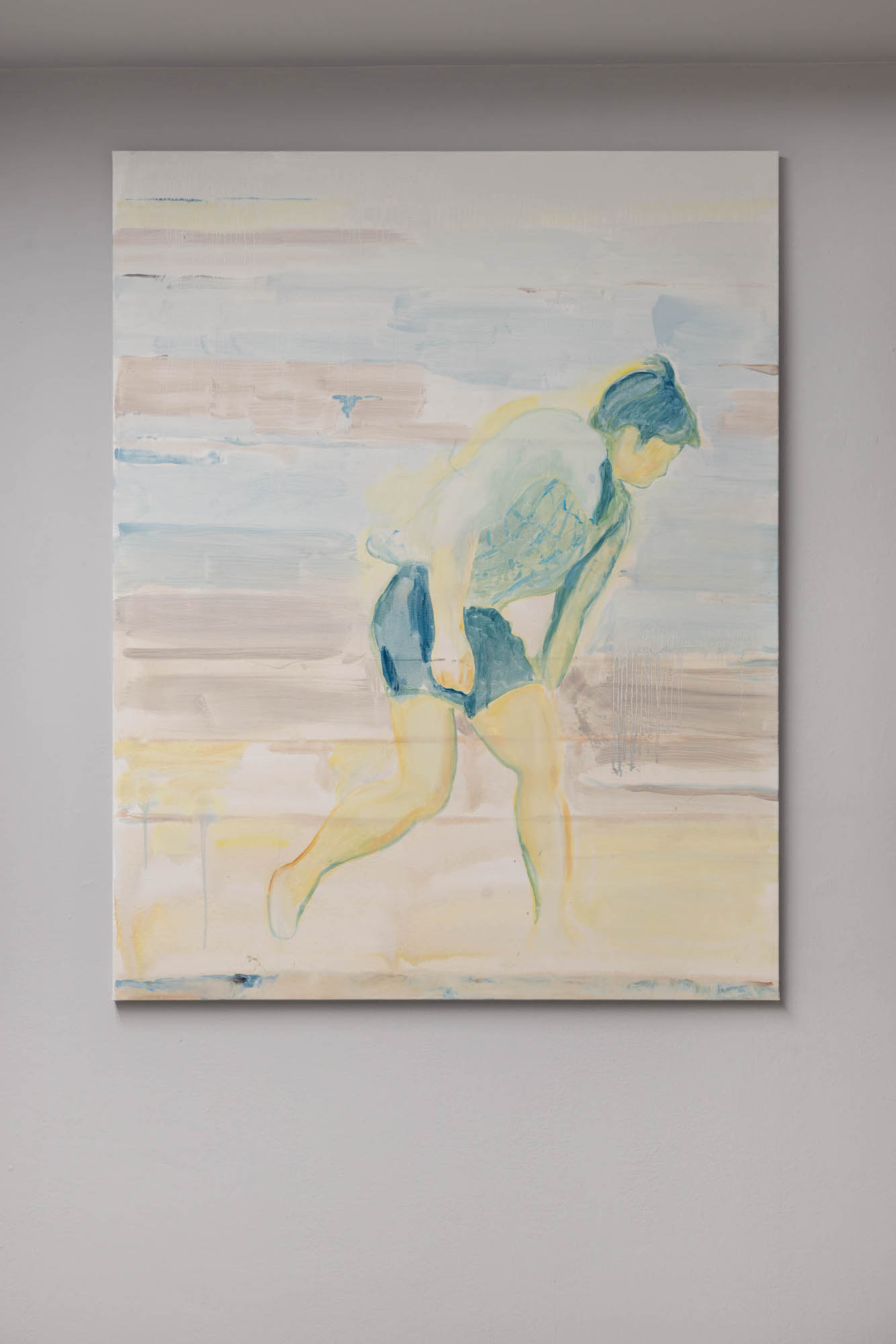
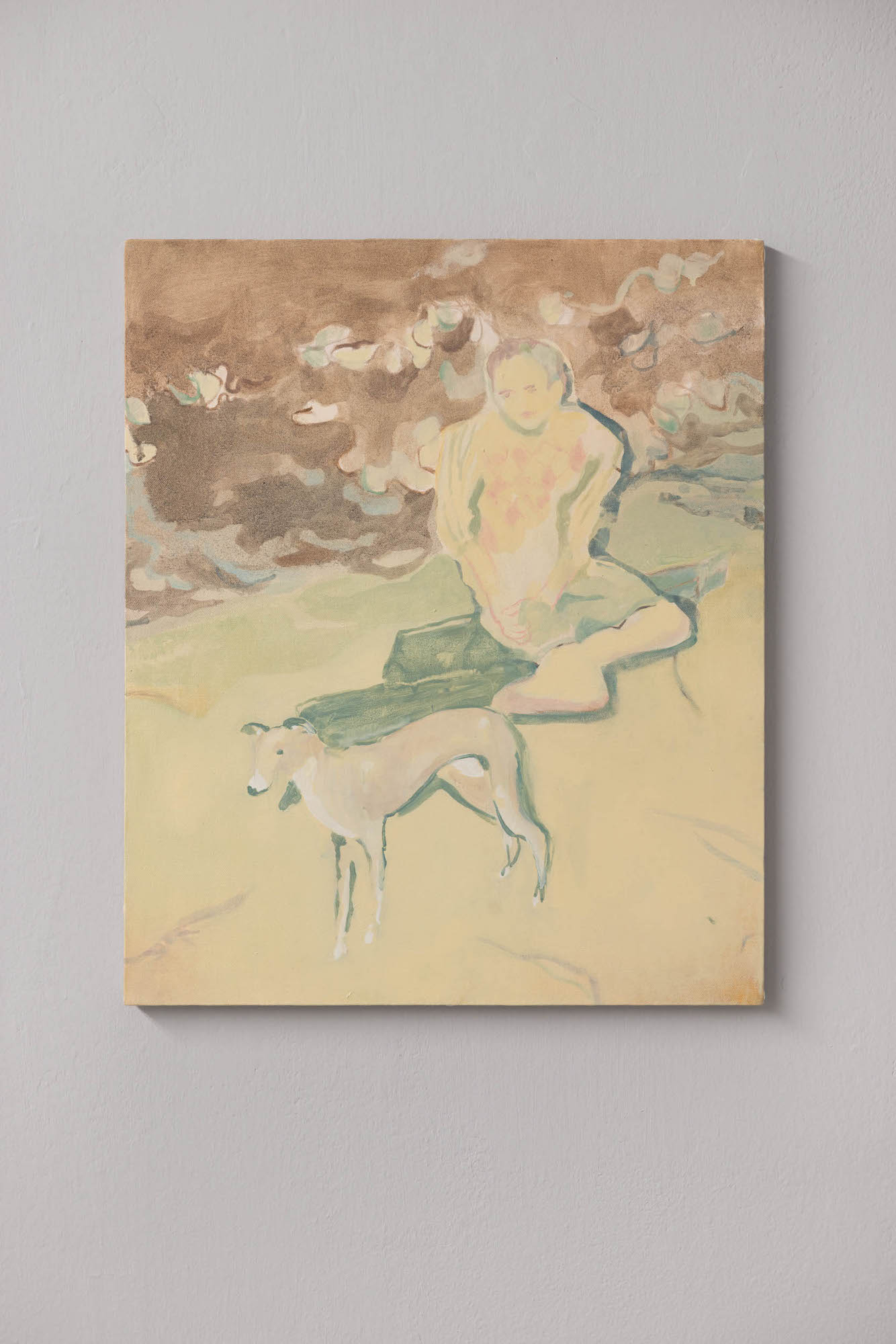
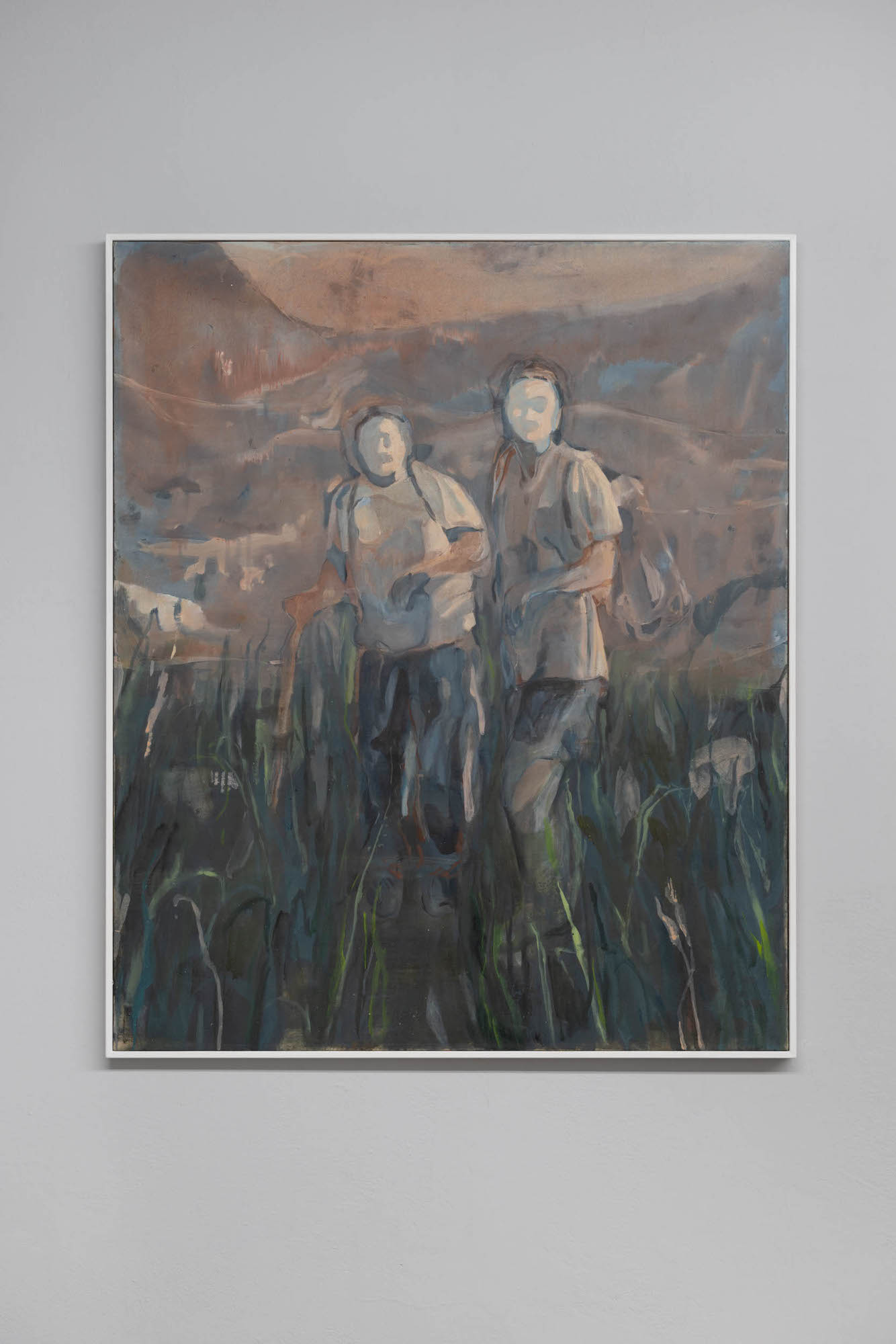
For all SMDOT/contemporary art exhibitions, a playlist will be created by Steve Nardini, the heart and soul of KOBO SHOP and a great musical expert. The following songs and artists have been selected for Raffaele Santillo and his solo exhibition "FRAGILE, NEVERTHELESS”